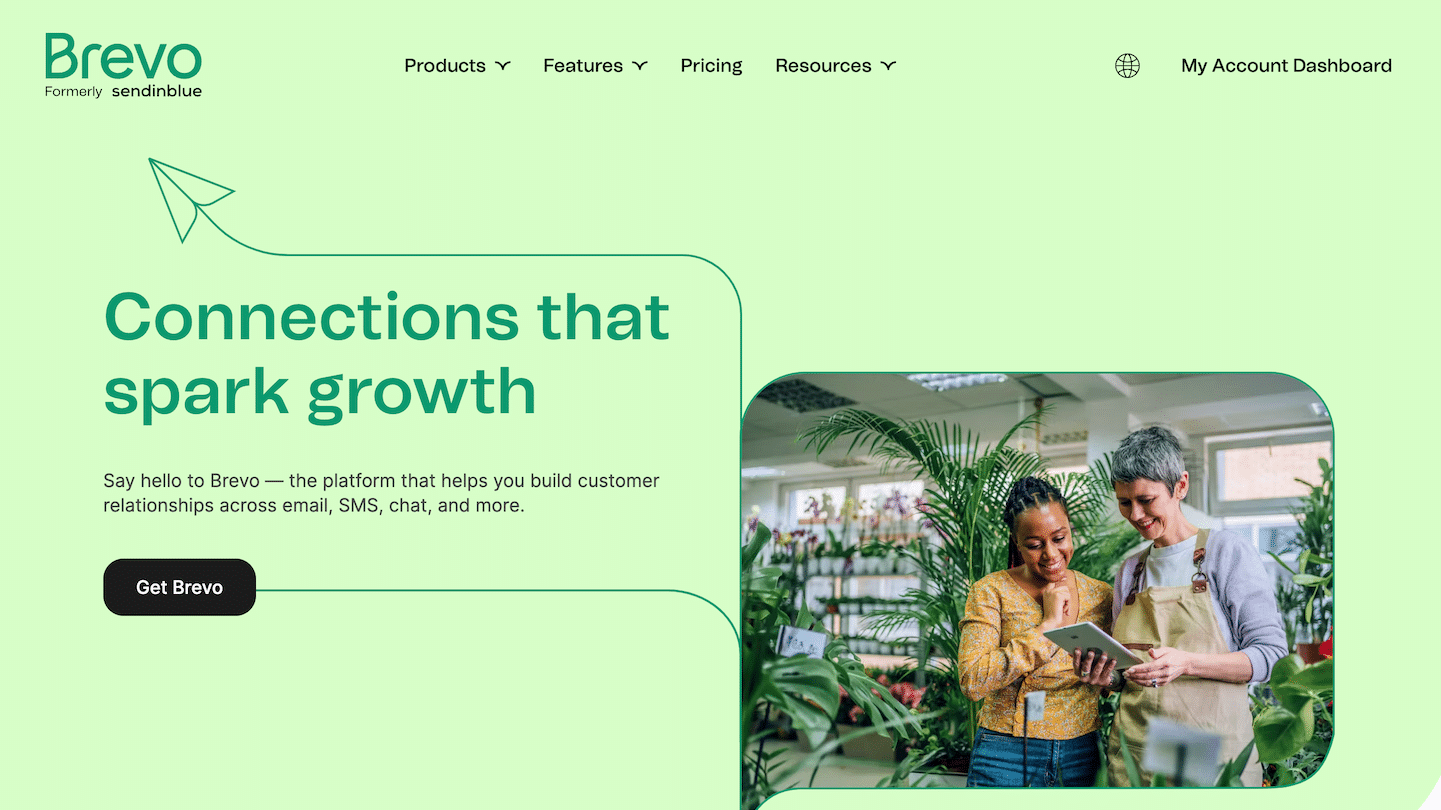The ICP, Ideal Customer Profile, is a fundamental notion to better prioritise your leads and gain commercial efficiency. What is it exactly? What makes a good ICP? How do you create an ICP? How often should it be updated? All these questions are answered in this article.
Sommaire
#1 A definition of ICP
The ICP (Ideal Customer Profile) is a description of a fictitious organisation (company, government agency or NGO) that gets value from using your products or services and brings value to your business. This is the type of customer you want, and the type of customer who wants to buy from you. So, operationally speaking, the KPI is the type of organisation you want to invest your sales and marketing efforts on, over a period of time.
Defining your KPI does not mean that you will only deal with one type of customer. It is simply a matter of determining the profile of the ideal customer that you wish to prioritise in your acquisition.
Your KPI is not a fixed concept. On the contrary, it tends to evolve and be (regularly!) modified according to your needs.
You should think of your ideal customer as the type of customer to whom, at a given moment, you will devote your sales and marketing resources.
Your KPI will therefore depend on:
- The situation you will enable him to solve
- Your goal
- Your means
#2 How to create an ICP for your sales teams
1. Make a list of your best customers.

The first step is to make a list of your top ten clients. Then, define two numbers:
– The first: how much are these clients paying you?
– The second: what value do your clients get from using you? It’s better to ask your customer this information directly, on the phone, by email, or via a questionnaire than to play guessing games.
- Discover 20 examples of questionnaires or satisfaction surveys analyzed in detail
- Our favorite emailing software
- Try Sendinblue for free – The leader inemail marketing in France
Logically, the second number should be a multiple of the first: if your customer pays you €100 per month, he should receive €200 worth of value in return.
It is not enough that they pay for your solution. They also need to get value from it, and be aware of that value!
There is no magic to this, but three steps:
- Before the customer buys, you need to convince them that your solution has potential, and that it is worth the investment.
- Once the customer has bought, you need to convince them to install your solution. It’s not enough that they have paid for it, they have to use it and invest time and resources so that value is created.
- Once the customer has gained value, make sure they are aware that it is because of you. It doesn’t just happen! Your customer success team can, for example, use CRM software to keep in touch with customers and make sure they are aware of the value you have created.
If you can’t identify ten clients, wait before moving on. Your priority should be to find those ten ideal clients. You can focus on the companies you already have as customers to get them to a certain level with your solution, or you can bring in new customers.
2. Identify common characteristics.

3. Prioritise the characteristics of your ideal clients.
Now that you have made a comprehensive list of all the common characteristics of your best customers, identify the ones that really matter.
After all, a KPI is only useful if it helps you to see things more clearly. The goal is to make it quick and easy for everyone in your company to understand who the ideal customer is and who is not. So choose between five and ten attributes to define your KPI.
#3 A framework for creating your ICP
Finding a client who is Ready, Willing and Able is a good start!
But if there is a chance that your customer will become successful with your product, you can acquire and sustain the profitability of that customer. This means: expansion for him, and advertising for you! That’s what an effective KPI is all about.
Here are the main features of the framework for creating your PKI.
- Loan :
The customer is ready if they have a problem to solve or an opportunity to take advantage of and are aware of it. They also needa sense of urgency to act so that you can take advantage of it.
- Volunteer :
A willing customer is ready to take action to solve the problem.
And it’s even better if they are looking for options to solve their problem!
There are catalysts for change: mergers and acquisitions, investments, bankruptcies, hiring and firing, tenders, etc.
- Able to :
A capable customer has the (financial) means and authority to solve the problem. The way you sell corresponds to his buying cycle / buying process.
Ready, willing and able are the basic characteristics of an ideal client. But you can do even better by applying the value-added elements of successful and effective acquisition, expansion and advocacy.
- Potential for success :
The potential for success is a very important part of developing your ideal client profile. It has six different entries: technical, functional, resource, competence, experience, cultural.
Remember that this is just a potential for success… not a guaranteed success. You must always focus on the client’s desired outcome to ensure that they achieve their full potential.
- Efficiency of acquisition :
The actual cost of acquisition should be taken into account when defining the KPI. To do this, don’t forget to include onboarding and customer support costs when considering the cost-effectiveness of acquisition. You should also make sure you know the buying cycle/process of your customers to really understand whether they fit your situational ICP.
- Expansion potential :
Expansion potential includes additional seats (or licences, users, etc.), as well as upselling and cross-selling (selling the same thing to different parts of the business, selling other products to existing customers).
Expansion must be logically orchestrated around customer success
This is a major consideration in the decision to sell to a corporate department or to an SME, to an agency or to a company, etc.
Customer success is absolutely necessary here… no success, no expansion. Full stop.
- Defence potential :
Word of mouth is usually horizontal: people will refer you or advocate for you to their peers.
This allows you to lower your cost of acquisition: if you spend €1 to bring in 2 customers (where the 1st one refers another), your CAC drops from €1 to €0.50.
Be careful about the customers you attract in the first place: customers don’t usually bring in customers of higher value than themselves; this can happen, but don’t count on it
Once again, the success of the client is essential… no success, no promotion!
#4 How to use this ICP in your sales and marketing processes?
Now it’s time to analyse and integrate this information into your go-to-market strategy. Start by compiling your KPI into a document that can be shared across your company. It will be useful for your marketing team to decide on campaigns and for your sales teams to better understand how to get customers to buy. It can also be used by new employees to find out who your customers are.
Then, to integrate a KPI into your marketing and sales efforts, the method is to distinguish between your customers’ sentences, their objectives and processes through the structure below.
- Objectives
First, identify the goals your customers are trying to achieve. After all your KPI research, this should be easier! Identify a goal that you can help your client achieve.
- Ongoing process
Next, identify the process your client is using to achieve this goal. Detail all the steps to better understand it.
- Problems:
Finally, note any difficulties encountered in the process or in achieving the objectives.
- New processes (using your products or services)
Now detail the process step by step, using your product or service. Is it shorter? Does it require the customer to completely change their way of doing things?
- Evidence
Make a list of the things that prove to your new clients that you are able to help them achieve their goals or get rid of their problems.
- Discovery questions
Now list your discovery questions: they will help your sales and marketing teams identify the most promising buyers early in the buying process. These discovery questions will also help your organisation create a scalable and predictable sales process. For example, your sales representatives can seek to understand customer challenges early in the qualification phase. They will structure their calls, demonstrations and presentations directly around a specific goal and/or challenge.
- Objections
Dealing with customer objections is part of the sales process, so you need to be prepared to deal with them. To do this, sales representatives should collect the objections they hear from potential customers and make a list of them. Then you will prepare responses to each objection.
This will enable your sales team to respond consistently to customer objections. At the same time, your marketing team should create content that proactively addresses these objections.
Thus, by repeating this process for each objective and problem, you will have a common thread for tailoring your marketing and sales approach to each customer.
What happens now?
You can now develop buyer personas with confidence. You can compare your KPI to your current customer base, or to leads that have not gone through.
Finally, it may be useful to use your KPI to obtain leads that are similar to it through a prospecting file. The prospecting file can be created, but it can also be purchased.
We invite you to consult these articles:






